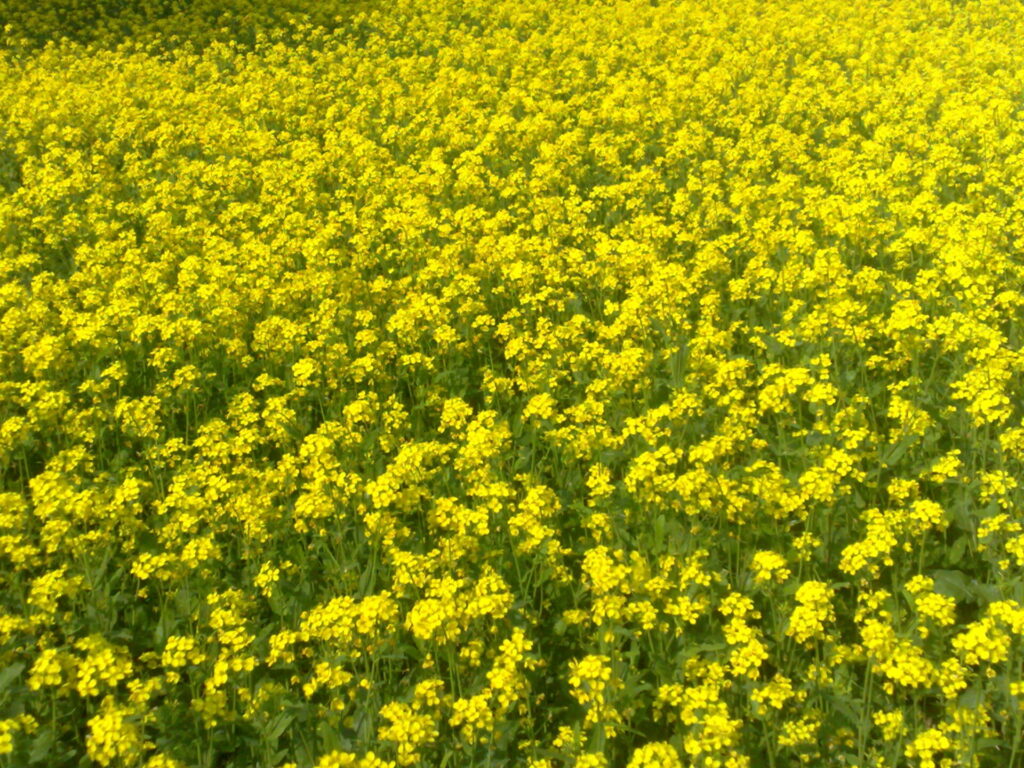Mustard is an annual herb that is native to certain regions in Europe, with roots in Asia, North Africa, and the Middle East as well depending on the variety of mustard. It is a cold-hardy annual and prefers cooler temperatures. Mustard has an extensive history, spanning back to the Stone Age and ancient Egyptian civilizations for its culinary and medicinal uses. All parts of the mustard plant are edible, and its seeds are used to create the condiment that we know and love as mustard, too. This condiment is usually made from white and black mustard seeds, as brown mustard is known to be very spicy. Mustard plants can grow up to 3 feet tall and is known for its yellow flowers that adorn it in groupings of two to twelve. These flowers are commonly consumed as well as used in everything from teas to garnishes for fancy plating of dishes.
A short list of popular varieties include: Red Giant, Scarlet Frills, Green Wave, Ruby Streaks, Southern Giant, Purplewave, Carolina Broadleaf, Mizuna (Japanese).
Mustard grows in USDA zones 4 to 11, however, it is an annual in zones 4 to 7.






